Dornier Do 17 Z-7
WWII German Night Fighter
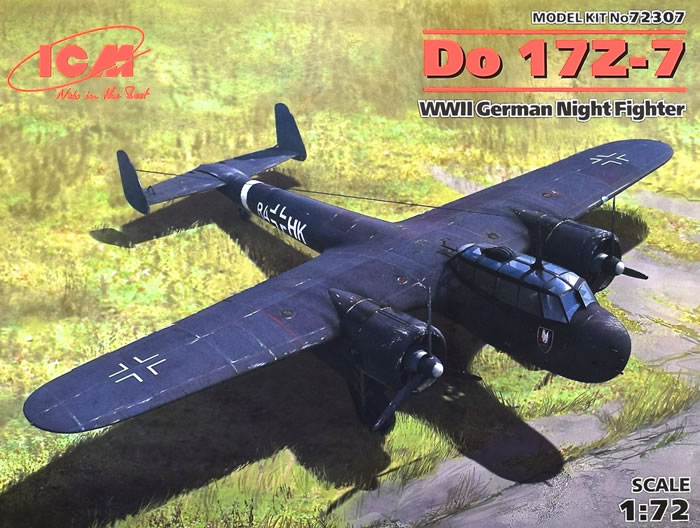
ICM, 1/72 scale
S
u m m a r y : |
Description and Item No.: |
ICM Kit No. 72307 - Dornier Do 17 Z-7 WWII German Night Fighter |
Contents and Media: |
125 parts in grey plastic (not all are used), 12 clear plastic parts (not all are used), and one decal sheet with markings for two airframes. |
Price: |
£16.66 Plus Shipping at Hannants
$43.99 Plus Shipping at Kitlinx |
Scale: |
1/72 |
Review Type: |
First Look |
Advantages: |
Straightforward engineering; high level of detail and moulding; sturdy packaging. |
Disadvantages: |
|
Recommendation: |
The engineering is straightforward, the recessed textures are crisply rendered and the overall detail is sufficient right out of the box. |
Reviewed by John Miller

Airfix's 1/72 scale Sea King is available online from Squadron.com
You know how it goes: Saturday, Skyway Model Shop, no self-control, new Do-17 Night Fighter…… The result was predictable if nothing else. I like ICM kits in general as is evidenced by the notable presence of this manufacturer in ye olde stash. This is a very nice kit of a lesser-known but interesting variant of the Fliegender Bleistift. Well done, ICM!
Background
The Dornier Do-17, sometimes referred to as the Fliegender Bleistift ("flying pencil"), was a light bomber used by Nazi Germany during World War II. It was produced by Claudius Dornier's company, Dornier Flugzeugwerke. The aircraft was designed as a Schnellbomber ("fast bomber"), which in theory, would be so fast that it could outrun defending fighter aircraft.
The Do-17 was designed with two engines mounted on a "shoulder wing" structure and possessed a twin tail fin configuration. The type was popular among its crews due to its handling, especially at low altitude, which made it harder to hit than other German bombers.
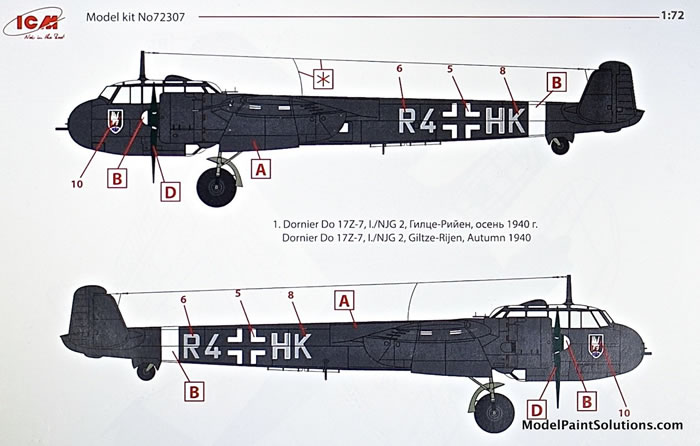
Designed in the early 1930s, it was one of three main Luftwaffe bomber types used in the first three years of the war. The Do-17 made its combat debut in 1937 during the Spanish Civil War, operating in the Condor Legion in various roles. Along with the Heinkel He-111 it was the main bomber type of the German air arm in 1939–1940. The Dornier was used throughout the early war, and saw action in significant numbers in every major campaign theatre as a front line aircraft until the end of 1941, when its effectiveness and usage was curtailed, as its bomb load and range were limited.
Production of the Do-17 ended in mid-1940, in favour of the newer and more powerful Junkers Ju-88. The successor of the Do-17 was the much more powerful Dornier Do-217, which started to appear in strength in 1942. Even so, the Do-17 continued in service with the Luftwaffe in various roles including glider tug, research aircraft, and trainer until the end of the war. A considerable number of surviving examples were sent to other Axis nations as well as countries like Finland. Few Dornier Do-17s survived the war and the last was scrapped in Finland in 1952.
The Dornier Do 17Z series was the most recognized and mass-produced variant, and saw more combat service than the E-U types. The type was modified as a result of combat experience during the Spanish Civil War. The forward fuselage was redesigned, with the cockpit area being "dropped", or extended further to enable a rear firing gunner position to be installed, and the canopy extended aft, until it was nearly parallel with the leading edge and wing root.
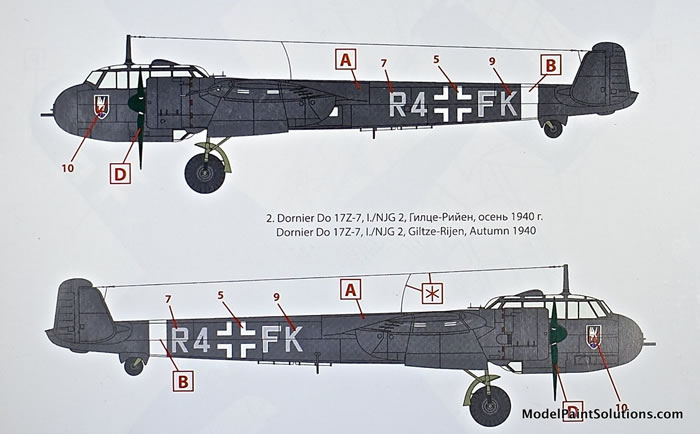
After bomber production ended in 1940, the Z model was modified into a night fighter by the addition of the solid nose section from a Ju-88C. The nose section contained one 20 mm MG FF cannon and three 7.92 mm (.312 in) MG 17 machine guns. Three prototypes were converted from existing Z-series airframes into the Do-17 Z-7 Kauz I ("Screech-Owl") configuration. The standard Z-7 was fitted with Bramo 323P-1 radial engines and had a crew of three. In comparison to the standard bomber version, the fuel load arrangement was altered by subdivision into cells. Two cells were in the wings, with a capacity of 770 liters (154 imperial gallons) each. A third cell was placed in the bomb bay within the main fuselage, having a capacity of 895 liters (179 imperial gallons). The oxygen supply for the three-man crew was reduced to nine bottles, as intercepts at high altitudes were not anticipated. Add-on armour in the form of heavy steel plates was bolted to the nose bulkhead to protect the crew against frontal fire. Originally, it was planned to completely armour the crew compartment. This idea, was given up again as the increased weight would have reduced the performance of an already slow aircraft. The ammunition loads for the three 7.92 mm MG 17s amounted to 3,000 rounds and 400 rounds of ammunition for the 20 mm MG 151 cannon (although some Do 17Z bombers carried a single 20 mm for ground attack missions).
Postscript: On September 3, 2010, the Royal Air Force Museum London announced the discovery of a Henschel-built Dornier Do-17Z buried in the Goodwin Sands off the coast of Kent, England. On 10 June 2013, a salvage team raised the airframe from the seabed.
(Edited from Wikipedia)
Removal of the colorful lid reveals a second, tabbed lid that is integral with the box. This makes for a very sturdy box capable of being stacked in ye olde stash with little concern of being crushed. It’s a pity other manufacturers don’t provide such sturdy boxes for their kits hint, hint……..
As is the norm with recent ICM kits the recessed surface detail is crisp and scale-appropriate. There is very little flash and the sprue gates are small and well placed. Overall this is beautifully molded kit.
The build commences with the pilot’s office and here the kit provides a nicely detailed cockpit complete with crew seats and stations.
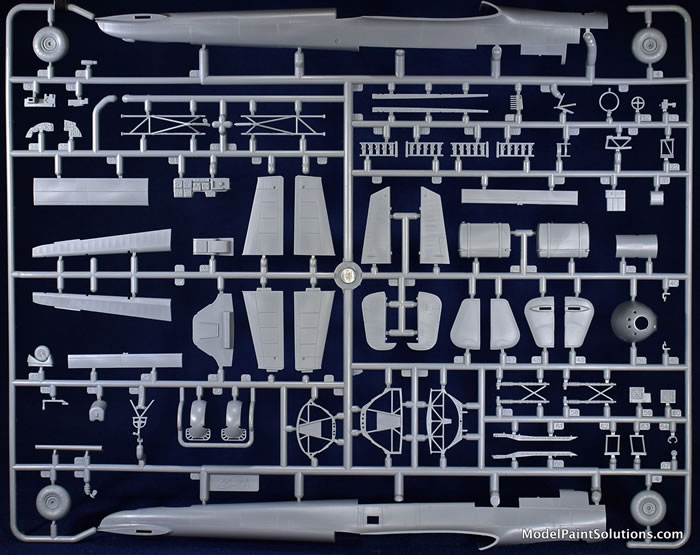
The full-span upper wing and half-span left and right lower wing parts are assembled next and offered up to the assembled fuselage. All control surfaces (elevators, ailerons, and rudders) are provided as separate pieces and poseable: nice.
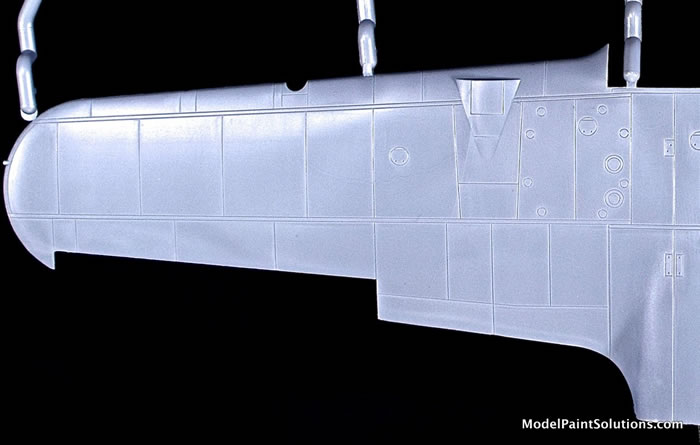
Following completion of the airframe, the instructions recommend the installation of bombs and racks in the bomb bay. This is curious given that the night fighter version had these deleted and replaced with an extra fuel cell. Moreover, unless the bomb bay doors are assembled open, none of the details therein will be visible. I’ll be building mine sans bombs with bay doors closed.

Next up are the underwing nacelles that house the engines, mounts, and main landing gear. Interestingly, these are assembled onto the bottom of each wing from multiple pieces. The nicely molded radial engines each with multi-part exhausts will look very convincing under paint and washes. With the addition of the multi-part forward cowls assembly of the airframe is largely complete.
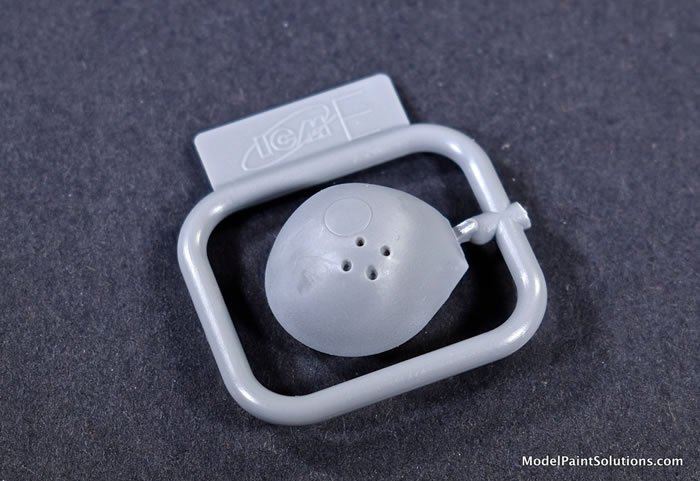
The multi-part main gear assemblies are nicely detailed and replicate the tube frame structures convincingly. The main wheels/tires are composed of halves but luckily the tire tread is simple and will be easy to clean up after assembly.
The canopy parts are crystal-clear with crisp, scale appropriate framing. An additional clear window panel, perhaps representing an armored upgrade to the Z variant, has to be glued onto the front of the main canopy. Care will have to be exercised here to avoid smudging of frosting either part during assembly.
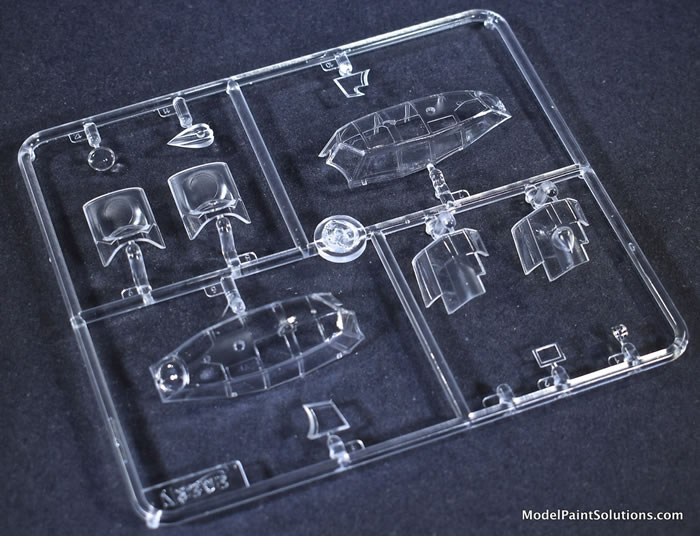
Outside of gluing the aforementioned window panel to the canopy I see no hidden issues laying in wait. This looks to be an easy, straightforward build.
Color and Markings
The decals by ICM have good registration and color density.
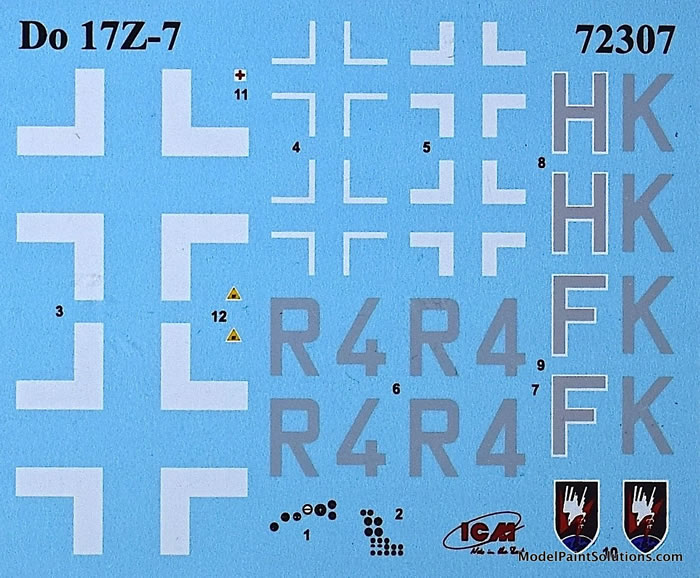
Markings are provided for two airframes (both black). Outside of yellow, fuel grade triangles no airframe stencil data is provided.
This is a nice kit. The engineering is straightforward, the recessed textures are crisply rendered and the overall detail is sufficient right out of the box.
Highly recommended!
Kit purchased by reviewer.
For more on this review visit Modelpaintsolutions.com
Review Text and Images Copyright © 2020 by John Miller
Page Created 28 January, 2020
Last updated
24 February, 2020
Back to HyperScale Main Page
Back to Reviews Page

|
Home
| What's New |
Features |
Gallery |
Reviews |
Reference |
Forum |
Search